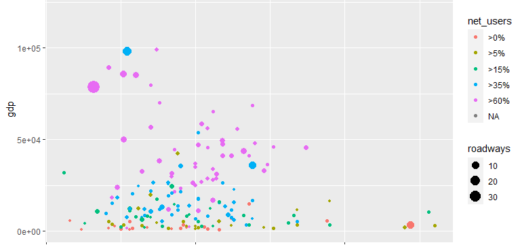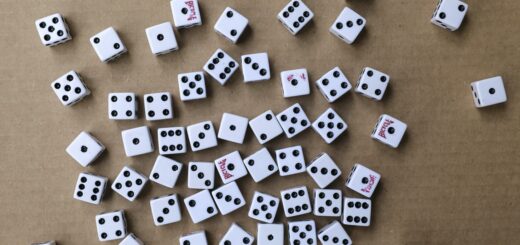Decision Tree R Code
Decision Tree R Code, Decision trees are mainly classification and regression types.
Classification means Y variable is factor and regression type means Y variable is numeric.
Just look at one of the examples from each type,
Classification example is detecting email spam data and regression tree example is from Boston housing data.
Decision trees are also called Trees and CART.
CART indicates classification and regression trees.
The main goal behind the classification tree is to classify or predict an outcome based on a set of predictors.
Latest Data Science job vacancies
Advantageous of Decision Trees
Easy Interpretation
Making predictions is fast
Easy to identify important variables
Handless missing data
One of the drawbacks is to can have high variability in performance.
Recursive portioning- basis can achieve maximum homogeneity within the new partition.
Decision Tree R Code
Method 1:- Classification Tree
Load Library
library(DAAG) library(party) library(rpart) library(rpart.plot) library(mlbench) library(caret) library(pROC) library(tree)
Getting Data -Email Spam Detection
str(spam7)
data.frame': 4601 obs. of 7 variables: $ crl.tot: num 278 1028 2259 191 191 ... $ dollar : num 0 0.18 0.184 0 0 0 0.054 0 0.203 0.081 ... $ bang : num 0.778 0.372 0.276 0.137 0.135 0 0.164 0 0.181 0.244 ... $ money : num 0 0.43 0.06 0 0 0 0 0 0.15 0 ... $ n000 : num 0 0.43 1.16 0 0 0 0 0 0 0.19 ... $ make : num 0 0.21 0.06 0 0 0 0 0 0.15 0.06 ... $ yesno : Factor w/ 2 levels "n","y": 2 2 2 2 2 2 2 2 2 2 ...
Total 4601 observations and 7 variables.
Chi Square Distribution Examples
mydata <- spam7
Data Partition
set.seed(1234) ind <- sample(2, nrow(mydata), replace = T, prob = c(0.5, 0.5)) train <- mydata[ind == 1,] test <- mydata[ind == 2,] Tree Classification tree <- rpart(yesno ~., data = train) rpart.plot(tree)

printcp(tree)
Classification tree: rpart(formula = yesno ~ ., data = train) Variables actually used in tree construction: [1] bang crl.tot dollar Root node error: 900/2305 = 0.39046 n= 2305 CP nsplit rel error xerror xstd 1 0.474444 0 1.00000 1.00000 0.026024 2 0.074444 1 0.52556 0.56556 0.022128 3 0.010000 3 0.37667 0.42111 0.019773
plotcp(tree)

You can change the cp value according to your data set. Please note lower cp value means the bigger the tree. If you are using too lower cp that leads to overfitting also.
tree <- rpart(yesno ~., data = train,cp=0.07444)
Confusion matrix -train
p <- predict(tree, train, type = 'class') confusionMatrix(p, train$yesno, positive=’y’)
Please make sure you mention positive classes in the confusion matrix.
Confusion Matrix and Statistics Reference Prediction n y n 1278 212 y 127 688 Accuracy : 0.8529 95% CI : (0.8378, 0.8671) No Information Rate : 0.6095 P-Value [Acc > NIR] : < 2.2e-16 Kappa : 0.6857 Mcnemar's Test P-Value : 5.061e-06 Sensitivity : 0.7644 Specificity : 0.9096 Pos Pred Value : 0.8442 Neg Pred Value : 0.8577 Prevalence : 0.3905 Detection Rate : 0.2985 Detection Prevalence : 0.3536 Balanced Accuracy : 0.8370 'Positive' Class : y Model has 85% accuracy
ROC
p1 <- predict(tree, test, type = 'prob')
p1 <- p1[,2]
r <- multiclass.roc(test$yesno, p1, percent = TRUE)
roc <- r[['rocs']]
r1 <- roc[[1]]
plot.roc(r1,
print.auc=TRUE,
auc.polygon=TRUE,
grid=c(0.1, 0.2),
grid.col=c("green", "red"),
max.auc.polygon=TRUE,
auc.polygon.col="lightblue",
print.thres=TRUE,
main= 'ROC Curve')

Method 2- Regression Tree
data('BostonHousing')
mydata <- BostonHousingData Partition
set.seed(1234) ind <- sample(2, nrow(mydata), replace = T, prob = c(0.5, 0.5)) train <- mydata[ind == 1,] test <- mydata[ind == 2,] Regression tree tree <- rpart(medv ~., data = train) rpart.plot(tree)

printcp(tree)
Regression tree: rpart(formula = medv ~ ., data = train)
Variables actually used in tree construction: [1] age crim lstat rm Root node error: 22620/262 = 86.334 n= 262 CP nsplit rel error xerror xstd 0.469231 0 1.00000 1.01139 0.115186 2 0.128700 1 0.53077 0.62346 0.080154 3 0.098630 2 0.40207 0.51042 0.076055 4 0.033799 3 0.30344 0.42674 0.069827 5 0.028885 4 0.26964 0.39232 0.066342 6 0.028018 5 0.24075 0.37848 0.066389 7 0.015141 6 0.21274 0.34877 0.065824 8 0.010000 7 0.19760 0.33707 0.065641
rpart.rules(tree)
medv 13 when lstat >= 14.8 & crim >= 5.8 17 when lstat >= 14.8 & crim < 5.8 22 when lstat is 7.2 to 14.8 & rm < 6.6 26 when lstat < 7.2 & rm < 6.8 & age < 89 29 when lstat is 7.2 to 14.8 & rm >= 6.6 33 when lstat < 7.2 & rm is 6.8 to 7.5 & age < 89 40 when lstat < 7.2 & rm < 7.5 & age >= 89 45 when lstat < 7.2 & rm >= 7.5
Coefficient of Variation Example
plotcp(tree)

Predict
p <- predict(tree, train)
Root Mean Square Error
sqrt(mean((train$medv-p)^2))
4.130294
R Square
(cor(train$medv,p))^2
0.8024039
Conclusion
In the regression model, the r square value is 80% and RMSE is 4.13, not bad at all..In this way, you can make use of Decision classification regression tree models.





